1980 Fiat X1/9
First affordable mid-engine mini-exotic
By Shahzad Sheikh
Sharp looks, Italian heritage, sportscar set-up, an exotic you could afford. Meet the Fiat X1/9.
See our video review by clicking below now!
The Lamborghini Miura of 1966 is widely regarded as the first production car to feature a mid-engined configuration. The advantages of this ‘racing-car’ layout were significant. Putting the engine towards the centre of the car improved the balance and weight distribution, whilst transferring the engine to behind the seats added heft to the rear of the car thereby improving traction for the rear wheel drive
For sports cars, this was seemingly a logical setup. However it results in poor packaging for the passenger compartment and there can be cooling issues. And since these are usually bespoke platforms unique to the mid-engined layout, the cost of producing these cars tends to be higher and as such this magical configuration remained in the realms of the truly exotic.
Until, that is, the Fiat X1/9 arrived six years after the Miura in 1972 and brought the race car format to the masses. Arguably the first small mid-engine car was the Ferrari Dino (though not actually badged as Ferrari) introduced in 1968. But with a price of $14,000, that was more than a little dearer than an X1/9 which sold for around $5000.
Autobianchi A112 Runabout
Back to the Miura though and the connection goes even deeper than just the drive format. The Miura was designed by Marcello Gandini whilst at the Bertone design house – his first project there, in fact. Bertone was aware that Fiat was looking to replace the little 850 Spider – a cute little rear-engined rear-driven car. The plan, however was to replace it with a front-wheel drive probably badged Fiat 128 Spider.
Bertone came up with an alternative. It showcased a Gandini-designed stunning and rakish, futuristic concept car at the 1969 Torino Car Exhibition, called the Autobianchi A112 Runabout. Beneath the sensational barchetta skin was in fact the engine and drive from the new Fiat 128 (also debuting at the same show), but turned a full 180 degrees. So the all-new 128 SOHC transverse engine and drive train from the front of the 128 was transplanted to behind the passenger cabin. Hence mid-engined and rear-drive!
Production X1/9 debuts
Fiat greenlighted the clever concept, to be turned into a road car in collaboration with Bertone. Three years later in 1972, the Fiat X1/9 debuted. Because it didn’t quite fit in with Fiat’s range of new front-wheel drive cars, it didn’t get the typical 127, 128, 124 nomenclature, and instead adopted its prototype code name: X1 for passenger vehicles, with the 9 denoting this to be the ninth car developed under this coding.
The concept’s long flat bonnet with centre groove, the wedge-shape with the distinctive C-pillar rollover hoop and the crease along the side all made it to the production car which, whilst not as extreme as the Autobianchi Runabout, still emerged an eye-catching and exquisitely styled car combining traditional proportions and dimensions fused with utterly contemporary lines.
So effective was Bertone’s finishing of the car, that it remains a breathtaking thing to behold even today, which becomes evident as I keep stopping to gaze at the thing whilst taking these pictures. Neat touches included a removable targa roof that could be stored in the front boot. Another luggage compartment behind the engine gave you some additional storage space.
Bertone actually produced the cars which were then transported to a Fiat factory for final assembly. And in fact after 1982, production was moved entirely out of Fiat and the car was even badged Bertone X1/9 though still popularly referred to as the Fiat X1/9. Production ended in 1989 with around 180,000 cars built.
All about handling, not speed
The first cars were fitted with a 1290cc single overhead cam four-cylinder engine producing 75bhp. Running through a four-speed gearbox from the Fiat 128 Rallye, this gave the lightweight sports car (under 900kg) decent enough performance with a 0-100kph time of around 13 seconds and a top speed of 170kph. Not entirely matching its mid-engined cousins from Lamborghini and Ferrari.
Six years later things improved with the introduction of the 1500cc engine from the Ritmo-Strada hatchback. It was a frisky rev-happy unit, now with a five-speed transmission. Producing 85bhp and the weight still pegged at about 920kg, it managed 180kph whilst acceleration improved to 0-100kph in 11.7 seconds. Cars from 1980 onwards got Bosch L-Jetronic fuel injection, although this didn’t have much impact on performance, and by this time, most hot hatchbacks were considerably quicker.
However it was all about the handling balance, not performance when it came to the X1/9, and here Bertone had got it spot on. The cornering poise was neutral and grippy with the feelsome steering, was perfectly weighted and gave plenty of feedback. Even if the rear did let go, it would have let you know in advance and would be imminently controllable according to road testers at the time. The little Fiat roadster was hugely fun to drive, even if you weren’t going to win any drag races.
Buying a Fiat X1/9
You’d think there would be plenty around to pick and choose from, but alas this is not the case, as many have perished at the hands of the rusty reeper. These cars proved notorious for corrosion. The affliction could affect the nosecone itself, front boot, doors, wings, rear arches and most seriously of all, the rear turrets in the engine bay.
Interior materials are hard to replace as they are mostly unattainable now, so you’d have to settle for alternatives rather than originals, but that’s not a reason to walk away entirely. Mechanically the only main concern appears to be worn gearboxes – watch out for telltale crunches and the lever jumping out of reverse, but again second hand and reconditioned replacements are available. Since the engine and transmission was shared with other Fiats, you shouldn’t have too much trouble keeping one going.
However the fear of rust keeps buyers away, which is actually not a bad thing as it keeps prices fairly reasonable too – that’s if you can find one worth buying. Prices start for as little as a couple of thousand dollars, but consider them a project car. You’re looking at around US$10k or a little more for a really good example. Have it checked thoroughly though, and one tip is to buy the oldest possible car, because apparently the quality of steel used in earlier production was better.
Rehan’s X1/9
The Fiat X1/9 that you see in these pictures is the only one that we know of here in the UAE. It belongs to Rehan Samee and is a 1980 car and probably one of the first to get the Bosch fuel injection.
From 1978, the X1/9 was fitted with much larger protruding bumpers to meet legislation in the US market, and although this is an American-sourced car, Rehan had the bumper, grille and front indicators replaced to match the specification of the original cars retro-fitting parts from 1974, and it looks much purer for it.
He sourced the car through an enthusiasts forum called Xweb, and commissioned Midwest Bayless Italian Autos in Columbus to conduct a complete restoration on the car, including engine rebuild and repainting.
Whilst at it, he had the engine bored out to 1600cc from the original 1500 and it now uses a larger but lighter crankshaft and a modified cylinder head. Rehan reveals that the power output has increased to 110bhp. Some X1/9 owners also replace the motor entirely with the power unit from the Fiat Uno Turbo.
Rehan has also improved the brakes, clutch, exhaust and air conditioning on this car. The interior was done by Sara Auto Care in Dubai which reupholstered the cabin in leather, including the old Porsche 914 seats that have been fitted to this car. It’s also boasts lightweight magnesium wheels made by Cromodora featuring Abarth Scorpion centre hubs handmade by an X1/9 enthusiast in the States – the horn button has been replaced too match the hubcaps.
So why buy the X1/9 in the first place? Like many classic ownership stories, this is based on a sentiment dating back to his earliest memories: ‘I grew up in Lahore to a diet of very mundane Toyota Coronas and Mazda 1500s (also designed by BERTONE I later found out). A guy in my school turned up one day behind the wheel of a lime green X1/9 and I just fell in love! It was the first exotic-looking car I had ever seen.’
He was nine years old at the time. More than three decades later, he finally has one of his own, and insists that it will be put to use. So watch out for the Fiat on the streets of Dubai – this historically significant little pointy-edge beauty is not one to be missed!

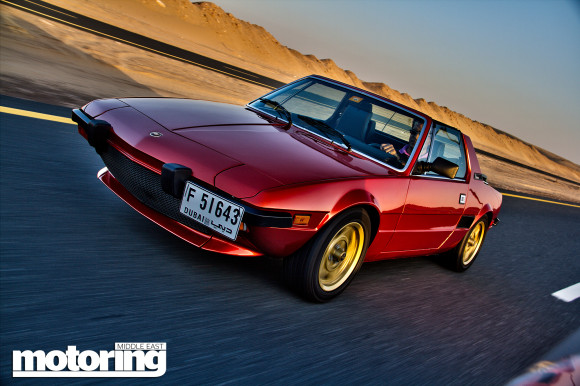
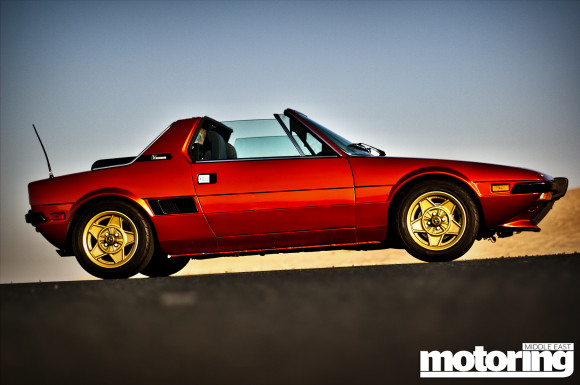
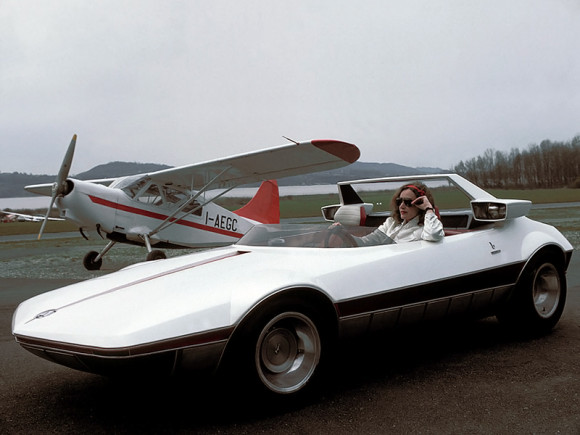

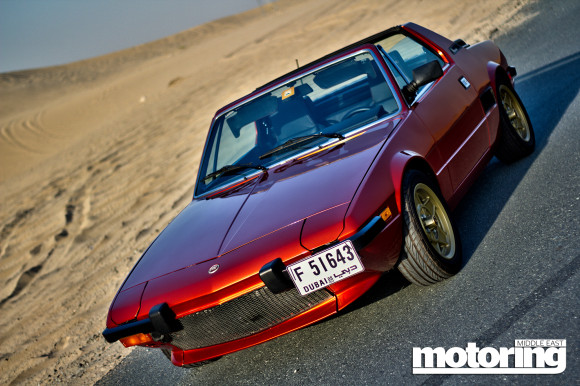
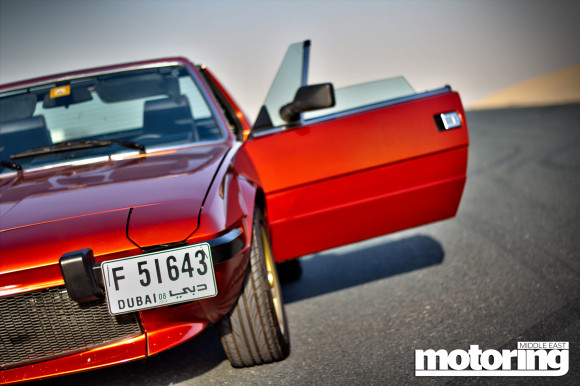
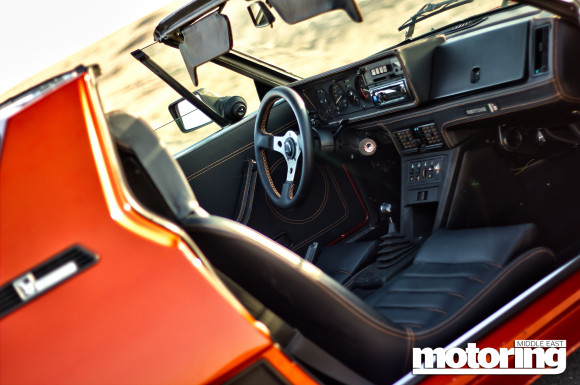
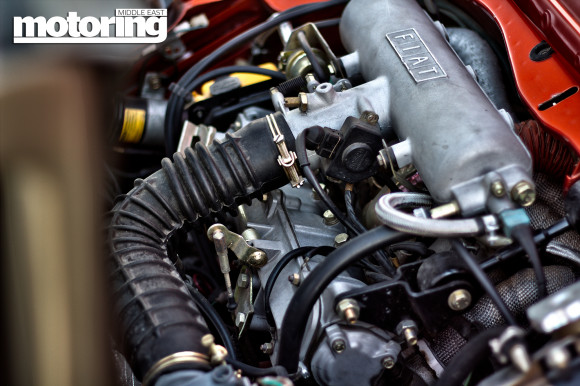
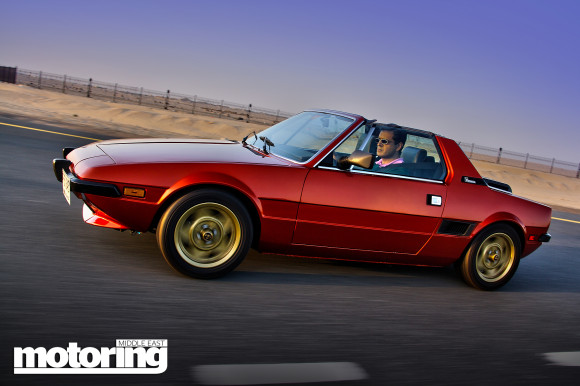
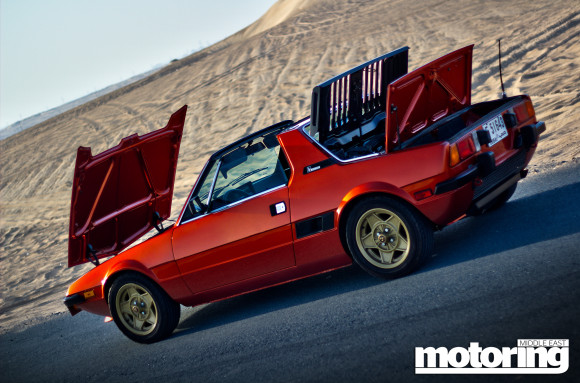




























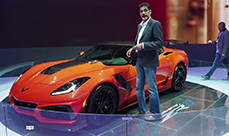

The spare tire isn’t on the front luggage space, its stored behind the passenger seat (LHD)
[Shahzad] My mistake. Text amended. Many thanks for that!
This car has inspired me. I have a 81 X19 that I bought in 1980 so Im the original owner. Its ready to be redone and some what of an engine upgrade .I love this car and hope to see it back on the road soon. Im interested in the engine upgrade that was done and the Paint colour code! Thanks
If you can help me out I would so appreciate it
John Gentile
Well and tastefully Done
John Gentile, the color code you can look at the Wiki – https://ru.wikipedia.org/wiki/Fiat_X1/9
Or in the picture – https://i.imgur.com/wjGM4Op.png
Beautiful!!! Nice photos. Tks!
My first (and second) car! But, my 3rd car was the first affordable mid-engine car, NOT the X1/9. Hello? Lotus Europa! First sold in 1966. https://en.wikipedia.org/wiki/Lotus_Europa